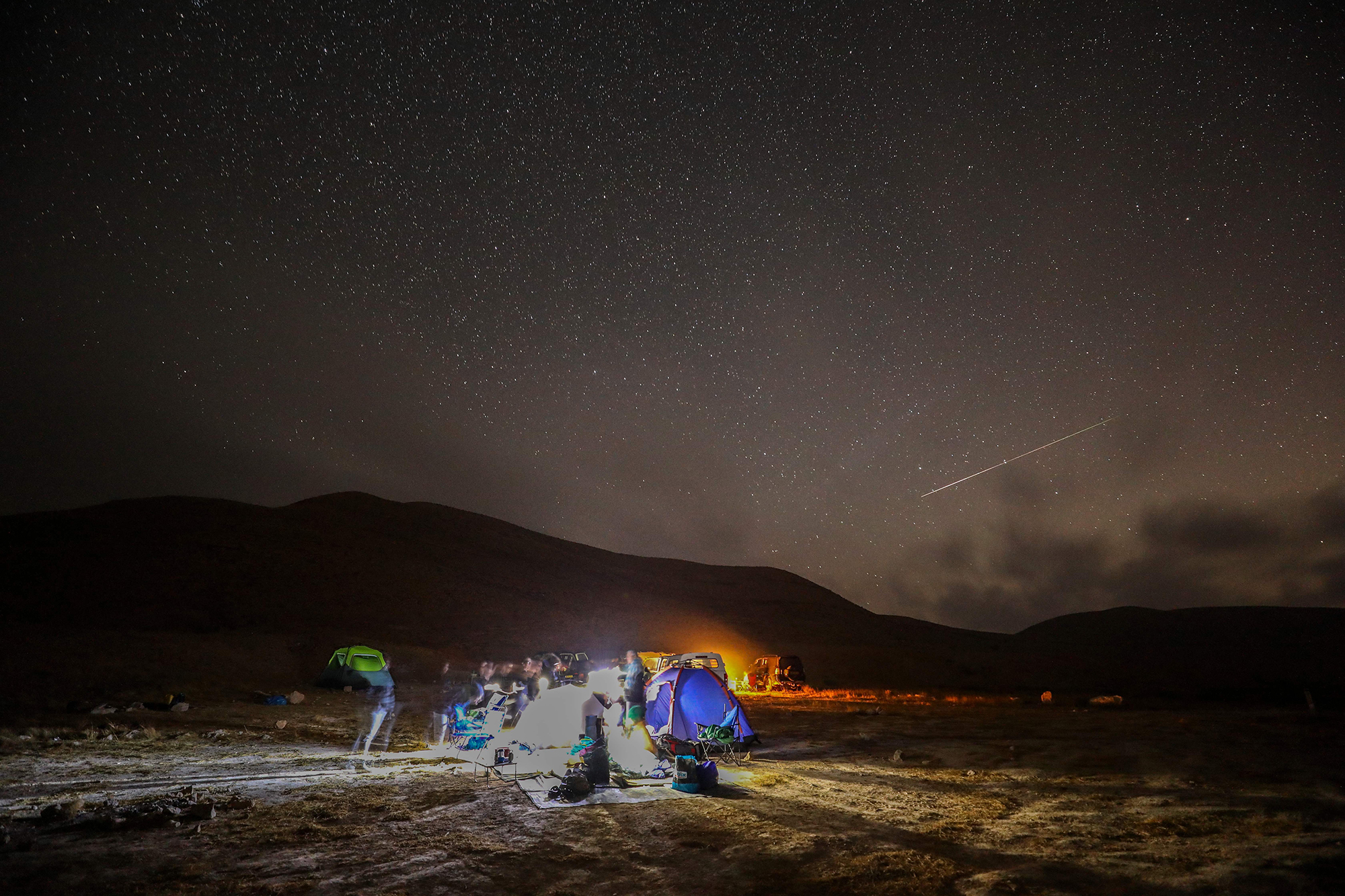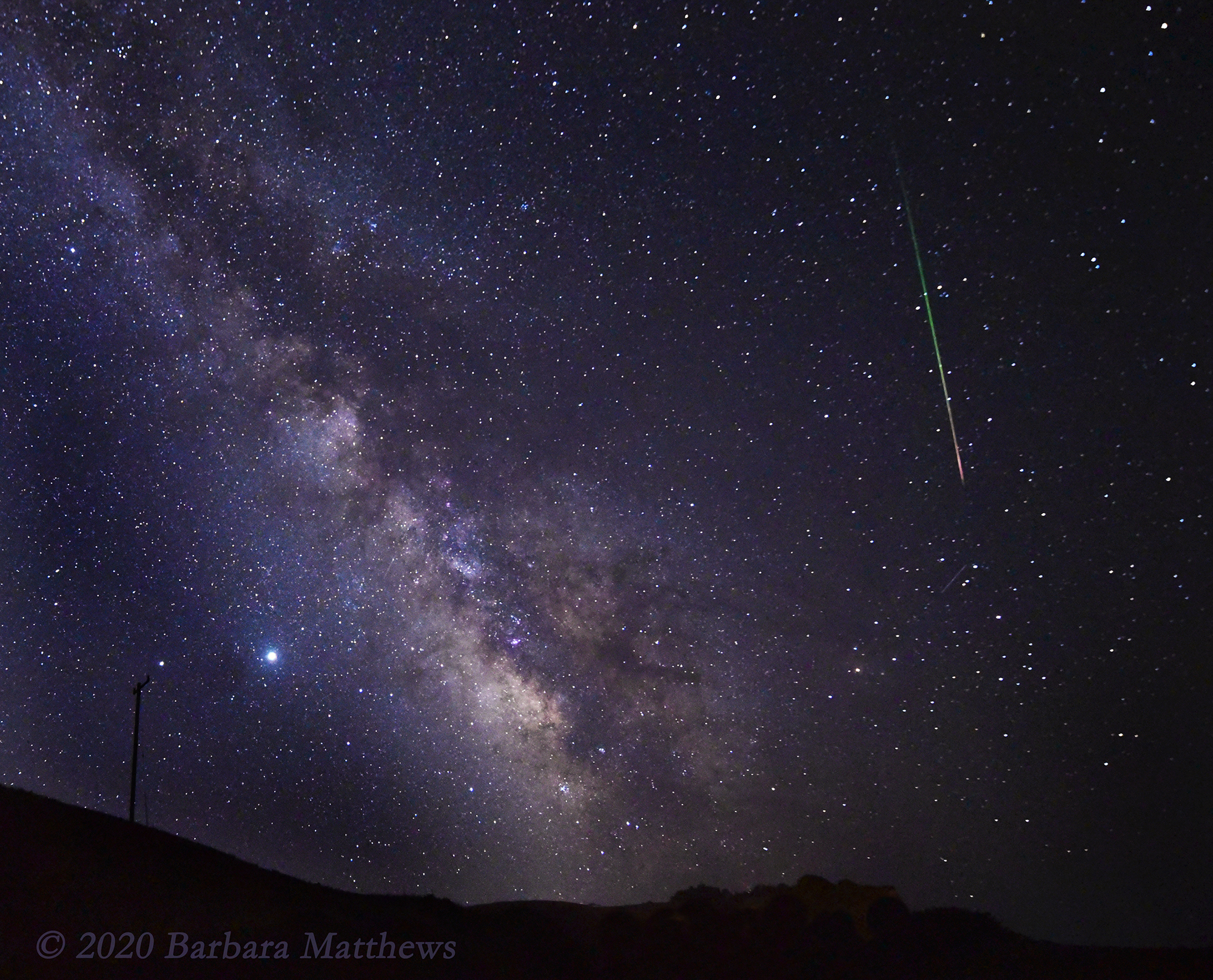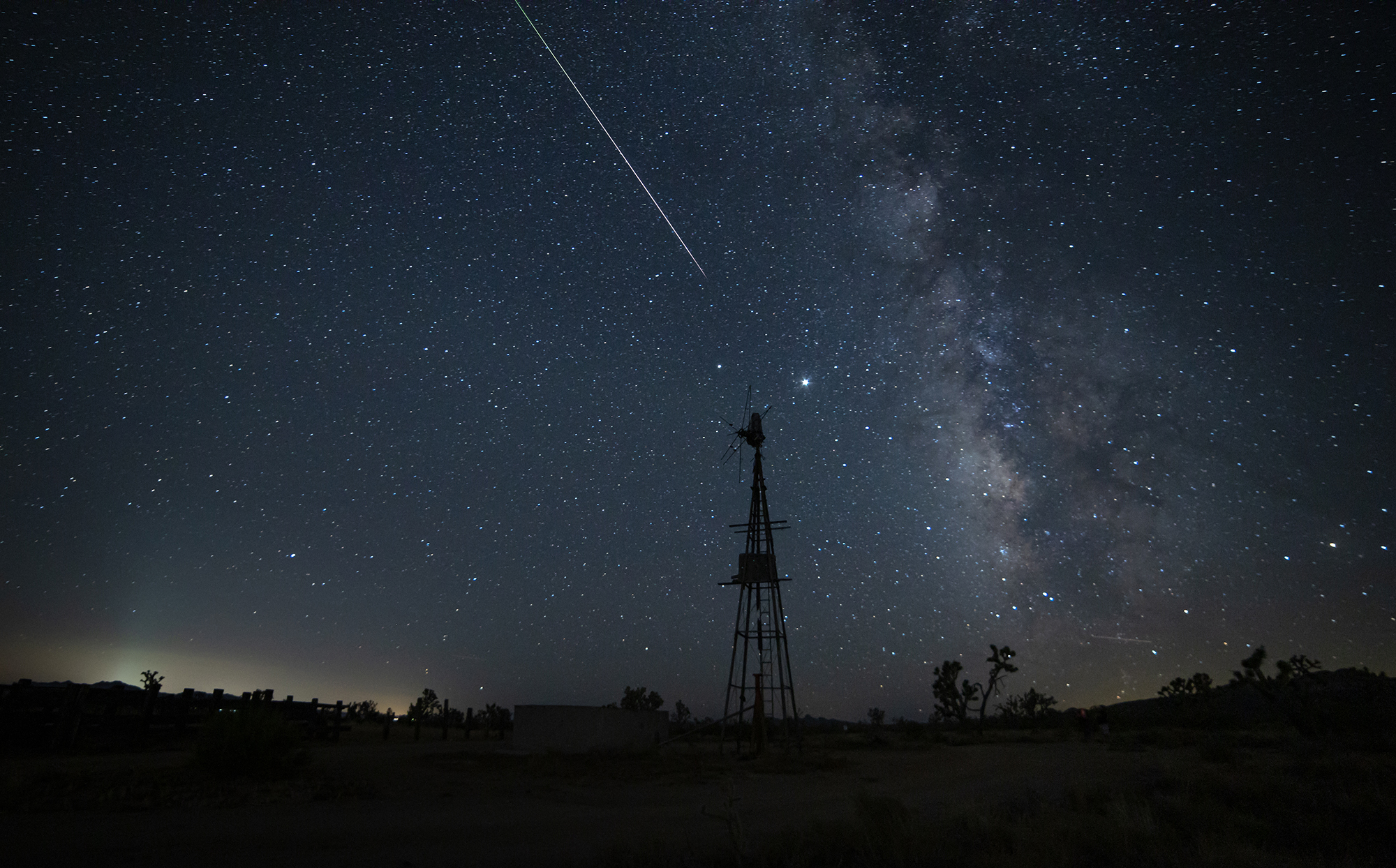Perseid meteor shower 2020 brings celestial fireworks to the night sky (photos)
The meteor shower peaked on Aug. 11-12.
The Perseid meteor shower, one of the most famous annual "shooting star" displays, reached its peak activity this week, putting on a spectacular show for skywatchers in the Northern Hemisphere.
While the Perseids are typically considered to be one of the best meteor showers, with about 50 to 75 meteors per hour, this year slightly fewer meteors were visible than usual. That's because the first-quarter moon drowned out some of the fainter meteors with its bright light.
Despite some interference by moonlight, photographers around the world managed to capture plenty of beautiful photos of Perseid meteors streaking through the night sky.
Related: Top 10 Perseid meteor shower facts
Snap an amazing 2020 Perseid meteor shower photo? Let us know! Send images and comments to spacephotos@space.com.
The Perseid meteor shower happens every year from mid-July to late August, when Earth passes through the stream of debris left behind by Comet Swift-Tuttle, which circles the sun about once every 135 years.
While the meteor shower is active for about five weeks, it reaches its peak activity every year around Aug. 12, according to the American Meteor Society. This year, the Perseids peaked before dawn on Wednesday (Aug. 12), but the view was better late Tuesday night (Aug. 11) before the moon rose and began to outshine the dimmer meteors.
In the photo above, taken by astrophotographer Barbara Matthews in Humboldt County, California on Tuesday (Aug. 11), a brilliant pink-and-green meteor streaks across the starry night sky near the glittering Milky Way galaxy. Visible to the left of the Milky Way is the bright planet Jupiter, with Saturn shining a bit more faintly to its left.
Breaking space news, the latest updates on rocket launches, skywatching events and more!
Matthews captured this image at 10:30 p.m. local time, or about 90 minutes before moonrise, when the sky was free of obstructing moonlight.
In the Nevada desert, near Las Vegas, astrophotographer Tyler Leavitt captured his own gorgeous views of Perseid meteors and the Milky Way.
In the image above, a pink-and-green meteor streaks into view from the left side of the frame, while Jupiter and Saturn glow side-by-side in the center. A second photo by Leavitt, below, shows a meteor appearing to head straight toward Jupiter.
While meteors often appear as white "shooting stars" prancing across the night sky, they can also glow with brilliant colors like pink, green, orange and purple.
The color of a meteor's trail depends on its chemical composition; as a meteor burns up in the atmosphere, elements like calcium, sodium and iron begin to ionize, producing a colorful glow. Perseids are known to produce bright pink-and-green trails, while the Geminid meteor shower in December tends to produce meteors with turquoise trails.
Related: How to see the best meteor showers of 2020
If you missed the peak of the Perseid meteor shower, it's not too late to catch it! The shower will remain active until around Aug. 26, according to the American Meteor Society.
To look for the meteors, you'll want to find a dark sky away from city lights. Perseid meteors will appear to radiate from the constellation Perseus (hence the name). Moonlight could still obstruct some of the fainter meteors, but the moon is currently waning, so the night sky will gradually get darker until the new moon next Tuesday (Aug. 18).
Editor's note: If you snap an amazing photo or video of 2020 Perseid meteor shower and would like to share it with Space.com for a possible story or gallery, send images and comments to spacephotos@space.com.
Email Hanneke Weitering at hweitering@space.com or follow her @hannekescience. Follow us on Twitter @Spacedotcom and on Facebook.

Hanneke Weitering is a multimedia journalist in the Pacific Northwest reporting on the future of aviation at FutureFlight.aero and Aviation International News and was previously the Editor for Spaceflight and Astronomy news here at Space.com. As an editor with over 10 years of experience in science journalism she has previously written for Scholastic Classroom Magazines, MedPage Today and The Joint Institute for Computational Sciences at Oak Ridge National Laboratory. After studying physics at the University of Tennessee in her hometown of Knoxville, she earned her graduate degree in Science, Health and Environmental Reporting (SHERP) from New York University. Hanneke joined the Space.com team in 2016 as a staff writer and producer, covering topics including spaceflight and astronomy. She currently lives in Seattle, home of the Space Needle, with her cat and two snakes. In her spare time, Hanneke enjoys exploring the Rocky Mountains, basking in nature and looking for dark skies to gaze at the cosmos.





